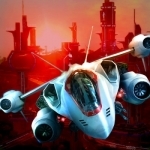
Battle Supremacy: Evolution
Games
App
Experience the true power in Battle Supremacy: EVOLUTION, a sci-fi transforming vehicles game with...
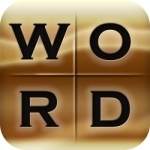
W.E.L.D.E.R.
Games and Entertainment
App
33% OFF after being Featured in Best New Game Updates!!! Normal price is $2.99! The ultimate word...

NORTH & SOUTH - The Game (Pocket Edition)
Games
App
RELIVE THE NORTH& SOUTH CULT GAME REMODELED! An absolute must for all retro fans! North & South...
Purple Phoenix Games (2266 KP) rated Pendulum in Tabletop Games
Sep 8, 2020
Pendulum is a real-time worker placement game utilizing sand timers to control players’ actions. While sand timers have been used in games plenty of times before, they are special components in Pendulum that will have players cursing their existence throughout the game. In a solo game the human player will be attempting to win against two Automas, essentially creating a three player game. Now, while I normally reconstruct the rules in my reviews to give a brief overview, Pendulum has too many intricacies to truly detail, so my rules overview will be quite abbreviated.
DISCLAIMER: We were provided a copy of this game for the purposes of this review. This is a retail copy of the game, so what you see in these photos is exactly what would be received in your box. I do not intend to cover every single rule included in the rulebook, but will describe the overall game flow and major rule set so that our readers may get a sense of how the game plays. For more in depth rules, you may purchase a copy online or from your FLGS. -T
Setup took me about 30 minutes the first game because I did not play it multiplayer first, but was setting up for my first Automa play. Setup is not difficult, but there are many small parts and different boards for which you must account. Subsequent games took significantly less time to setup so I was up and running immediately.
A game of Pendulum sees players vying for the crown by jockeying for mastery in Power, Prestige, Popularity, and completing a Legendary Achievement. These are all tracked on each player mat and the Automas’ mat. The game is a typical worker placement with all spaces giving some benefit, but also may be blocked by other players. By utilizing aggressive strategies and timing each worker action players will be gaining resources and votes and converting them into VPs on the individual tracks, the most important of which is the Legendary Achievement. No player may win the game without having completed a Legendary Achievement.
As the game progresses in real time, the sand timers will be flipped into areas blocking access to players, but allowing player meeples already stationed in these areas to enact their special abilities. Three timers of different time-lengths are used in Pendulum: 45 seconds, 2 minutes, and 3 minutes. The action spaces corresponding to the 45 second timer are less effective than the 3 minute timer areas, but are indeed necessary to generate more resources.
After the 3 minute purple timer has been flipped three total times, the game halts and a special Council Phase is enacted. This phase allows players to receive Council Reward cards, assess and compare placement for the next round, and set up for the next round. After the fourth Council Phase, the game ends and players will check for victory conditions.
Components. Have you seen a Stonemaier Games title recently? The components are stellar. Everything from the plastic (resin?) cubes and vote tiles and meeples, to the good-looking sand timers, to the linen finish on the cards AND the rulebooks is just amazing. Several reviewers have issues with the art in Pendulum, and say that it is drab and “uninspiring.” Well, I think it’s great, and I also think it is a bit muted to get out of the way of play. I certainly would not appreciate this game more if it had more exciting art. More exciting art means more attention spent on appreciating the art and not playing the game. Normally this is a boon for me, but Pendulum is a REAL-TIME game. I don’t have time to be gawking at game art! Components: excellent!
I really enjoyed my plays of Pendulum using the Automa system. I can’t necessarily say it felt like playing against two other players, but I don’t think it’s meant to do that. The Automa players sufficiently block spaces, and gain VP each round to compete with the human player. Also, I have never played a game using Automas before, so I had zero expectations getting into Pendulum. I do think I would enjoy this game lots more playing against other humans, but the current virus situation has nixed that for me. The Automa system is good, and I am so happy that it exists for Pendulum. I just want to play it with other gamers.
Purple Phoenix Games never award games with scores for previews and Solo Chronicles. However, I would certainly rate Pendulum high. I don’t believe it will ever crack into my Top 10 Games of All Time, but I also can see myself pulling it out when I want to exercise my brain and I don’t have access to any other gamers. I want you to understand that I do like this one quite a bit, and would certainly recommend it. I truly enjoy having to keep on my toes (literally) controlling my components as well as keeping track of the Automa movements, and assuring the timers are being flipped appropriately.
If your collection is missing a game that utilizes sand timers for more than just buzzing others on their turn, certainly give Pendulum a look. The design is fantastic, includes the Automa Factory solo rules (and extra components), and is satisfying to play. Heck, I didn’t even sit down when I played this because I needed to be so active around the board. If it weren’t so late as I am writing this, I would break it out and give it another go right now. Alas, I am old and need to sleep. Check out Pendulum.
Purple Phoenix Games (2266 KP) rated Fray: Champions of the Everyverse in Tabletop Games
Jul 1, 2020
DISCLAIMER: We were provided a prototype copy of this game for the purposes of this review. These are preview copy components, and I do not know for sure if the final components will be any different from these shown. Also, it is not my intention to detail every rule in the game, as there are just too many. You are invited to download the rulebook, back the game through the pending Kickstarter campaign, purchase it from your FLGS, or through any retailers stocking it after fulfillment. -L
Fray: Champions of the Every-Verse (referred to as just Fray from now on) is a game of dice rolling, grid movement, and fighting in which players are trying to eliminate all opponents and be the last remaining player in the arena. Before setting up to play, you must first determine how many Champions each player will control. Controlling only 1 Champion is considered “Single Mode” and makes for a quicker play-time. Players can control up to 3 Champions in a single game. After determining how many Champions each player will control, set up the game as described in the rulebook. You are now ready to begin!
A game of Fray is divided into a number of rounds, and to begin each round, all players must select one of their Champions to be the round leader, then roll a d6, and add the appropriate Initiative modifier. This determines the turn order for the round – the highest Initiative gets to go first, and so on in descending numerical order. It is important to note that in future rounds when determining Initiative, you may not select the same Champion to lead for consecutive rounds. After Initiative has been determined, player turns begin. On your turn, you will perform 2 Phases: an Item Phase and a Champion Phase. During the Item Phase, you have the opportunity to play as many Item cards from your hand as you wish. Item cards can give you special abilities or buffs for future turns, or can be played as reactions to opponent’s actions, depending on the card.
Once your Item Phase is done, you move to the Champion Phase. To begin your Champion Phase, choose which Champion you are using and roll the 3 Battle Dice. These dice help activate abilities on your turn. The chosen Champion may now move a number of squares as stated on their card. After movement, your Champion can now activate 1 action from the following: Attack, Defend, or Champion Ability. All actions require you to spend a number of resources in order to perform them, so this is where the Battle Dice come into play. Once you have performed your action, resolve abilities as needed (rolling a save against an attack, rolling the damage die, etc.). If, after resolving abilities, you still have unused Battle Dice, you can choose to store up to 2 of them for use on your next turn. You then repeat the entire Champion Phase with your next available Champion. Once you have used all of your Champions, your turn ends.
After all players have had their turns in a round, you move to the Loot Phase. Any player with any Champion within 3 spaces of the Loot Marker on the board gets to draw 1 Loot card. The first player then rolls a d6 and the Scatter die, and moves the Loot Marker appropriately for the next round. The new round is ready to begin, with all players rolling for Initiative once again. During play, if a Champion is reduced to 0 hit points, that Champion leaves the game. The player with the last remaining Champion on the board is the winner!
Ok, I know that seems like a lot, but the gameplay is actually pretty intuitive and streamlined. Here’s how a turn breaks down: play Item cards, roll Battle Dice, move Champion, perform 1 action, resolve, repeat with your other Champions, turn ends. That’s it! After going through the steps with my first Champion, the process just clicked and the gameplay flowed pretty seamlessly. It admittedly seemed pretty daunting at first when I was reading through the rules, but in the actual game, it is easy to pick up.
With the purpose of this game being knocking out all your opponents, obviously strategy is a pretty big aspect of the gameplay. All Champions have special abilities, attack combos, and types of attacks. Some Champions are only melee fighters and can interact with opponents 1 square away, others are only short- or long-ranged and must be at a distance to attack, and some have the option to be either melee or ranged. Each Champion requires a bit of a different strategy to be played successfully, and you’ve got to be able to adapt on the fly. That being said, this is a competitive combat game, so some players might not like being pitted directly against opponents and being targeted by others. The other strategic aspect to consider is the location of the Loot Marker on the board. The only way you ever get to draw Item cards is if you are within 3 squares of the Loot Marker at the end of the round. Are you willing to risk combat for a chance to gain an Item card? Or are you content with skirting the battlefield and letting your opponents take each other out? All things to consider when playing Fray.
The biggest drawback of Fray for me has to do with some components, or lack thereof. But as I stated earlier, this is only a prototype copy of the game, and I am sure that these things will be addressed in the final production copies! For starters, I’d like to see Turn Order Markers. Since the turn order varies each round based on Initiative, it would be nice to have some numbered markers to help players keep track of the order for the round. Along those lines, maybe a Turn Order Reference card for players could be added as well. The turn steps are generally pretty straightforward, but just having a reminder of the different types of movement, or what resources are required for which actions would be nice. And my final consideration for edits would be to include on each Champion card whether that Champion is a melee, short-ranged, or long-ranged fighter. That breakdown is in the rulebook, but having it on the card would be beneficial as well! Besides those three notes, the components of this prototype copy are phenomenal. The board, cards, and chits are all nice and sturdy. All of the game dice are high quality and easy to read. I know Brain Sandwich Games has plans for sculpted minis for the Champions, but even the simple standees in this copy are easily identifiable and will withstand many plays. The art of the cards is very detailed and awesome to look at. All in all, already a pretty great quality game!
Ultimately, I think Fray is a great game. It may need a little polishing up with some components, but the current gameplay is ready for production. I am not typically someone who enjoys directly competitive games, but Fray was one that I thoroughly loved. It has enough elements of strategy, combat, and luck of the dice rolls that it doesn’t feel targeting or confrontational. I am eager to follow the Kickstarter campaign and see what else Brain Sandwich Games has in store for an already awesome game! I would definitely recommend checking this one out – it’s a unique twist on a standard arena combat game.
Purple Phoenix Games (2266 KP) rated Five Tribes in Tabletop Games
Jun 21, 2019 (Updated Dec 17, 2019)
DISCLAIMER: There are several expansions for this game. Though we have them in our collection, for this review we are only using the base game. Should we decide to review the expansions in the future we will add that information here or link to the full review. -T
Five Tribes is a game of area control, auction/bidding, card drafting, and set collection with a modular board. At the beginning of each round, players bid coins to determine turn order – the higher you bid, the earlier you get to go in the round. On your turn, you will select a tile, pick up all the meeples on it, and move them around the board – dropping only one on each subsequent tile, a la Mancala mechanic. There are strict rules regarding meeple movement and placement, so strategy is key in deciding the best path to VPs each turn. When you place your final meeple on a tile, take all meeples of that same color from the tile into your hand. If that completely clears the tile, place one of your camels on it to indicate that it is under your control. Each meeple color represents a different tribe, and each tribe grants the player certain powers when collected – i.e. gathering resources, gaining gold, or invoking Djinn powers. After you use your meeple power, you also have the opportunity to use the power of your ending tile, whether it is under your control or not. The game ends when a player has placed their final camel, or if there are no more legal moves to be made. VPs are tallied, and the player with the highest score wins!
As a kid, I played Mancala A LOT. I’m not entirely sure why. I learned it at school, caught the bug, and started playing it a ton at home too. Five Tribes takes Mancala and makes it 1000x better. The pick-up-and-drop mechanic is integral to the game, but there is so much strategy required that you will never be bored playing Five Tribes. You have to follow movement/placement rules, you have to figure out what meeple power you’d like to use on a given turn, you also have to decide if there’s a certain tile power you need – all while the board is constantly changing between each player’s turn. That’s why bidding for turn order can be so important! If you see a move that will earn you tons of VP, are you willing to spend your hard-earned gold (VP) to ensure that you can make that move? Or are you content with saving your gold and capitalizing on opportunities that may be presented later in the round? The board is constantly changing, and your strategy must follow suit if you are to have any hope of winning! There is no single strategy for a guaranteed win every game, and that keeps Five Tribes refreshingly fun and engaging.
The one negative I have about Five Tribes is that there is kind of a learning curve to this game. There are so many moving elements, different iconography, and special powers that it can be overwhelming for a new player. After a couple of plays, it is easier to remember the intricacies of the game, but at first it can be kind of daunting. Not a huge negative, just something to keep in mind when pulling it out for newer players!
Overall, I love Five Tribes. The gameplay is engaging, the strategic options are diverse and seemingly limitless, and the components are awesome quality. I only just got this game for Christmas last year, but it’s making its way up the ranks in my list of favorite games! If you haven’t already, give this game a try – there’s more to it than meets the eye! Purple Phoenix Games gives Five Tribes a fantastic 21 / 24.
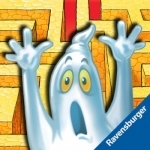
THE aMAZEing Labyrinth
Games and Entertainment
App
***** The iPad version of "THE aMAZEing Labyrinth HD" is winner of the "Deutscher Computerspielpreis...

Tennis Coach Plus
Sports and Education
App
VIDEO ANALYSIS - ANYONE ANYWHERE ANYTIME RECORD | COMPARE | IMPROVE your Tennis technique Tennis...
Purple Phoenix Games (2266 KP) rated Zoom in Barcelona in Tabletop Games
Jan 5, 2022
In Zoom in Barcelona, players are photographers competing in a local photography contest. Judges will dictate the preferred sites, and the contest will have an over-arching theme, while players also race to take shots at the most opportune moment with the sunlight over the city. There are multiple ways to score points, and collecting a diverse portfolio of shots from the day will win a prize for the best photographer!
DISCLAIMER: We were provided a copy of this game for the purposes of this review. This is a retail copy of the game, so what you see in these photos is exactly what would be received in your box. I do not intend to cover every single rule included in the rulebook, but will describe the overall game flow and major rule set so that our readers may get a sense of how the game plays. For more in depth rules, you may purchase a copy online or from your FLGS. -T
To setup, follow the instructions in the rulebook; there are just too many to list here. However, the starting state of the board should look something similar to the photo below. The major components are the board, the Landmark photo cards, the Transport cards, Natural Light track, Themes tokens, and of course: the Dragon token.
NOTE: This review includes all rules found in the rulebook. For lighter games, players may omit certain rule options.
Turns are very simple in Zoom in Barcelona and consist of two phases – Move and Perform One Action. Players may move up to two connected spaces by walking, or more spaces by playing and discarding one of their Transport cards (shown above in hand). Players will be moving around the board like crazy attempting to arrive at certain locations so that they may take one action from the following: take one photo, visit an Information Point, or take the Metro.
Should the active player choose to take one photo, they must be currently at a location that matches one of the Landmark cards currently residing in the Judges’ Picks area (northeast corner of the board). To take a photo here, the player simply collects the card from the board and replaces it with another from the deck. Collecting Judges’ Picks cards is nice, but if players neglect to advance themselves along the Natural Light Track (southeast corner of the board), these cards will not score. Players will need to take photos at the leftmost location to be able to score two Landmark cards, with each subsequent Natural Light card allowing an additional two cards to be scored, up to a maximum of eight total cards scored. Players may also take photos of portions of the Barcelona Skyline by arriving at the corresponding Skyline Viewpoint spots on the board and collecting the token present (in a two player game, there is only one token at each spot, so the race is on!). These Skyline tokens can be combined at the end of the game for bonus points if combined in a specific order per the individual City Skyline Tokens dealt at the beginning of the game. Finally, players may take a photo of the Dragon in its current Lair by arriving on the Dragon’s location and choosing this action. By taking its photo, the Dragon allows players to freely take one of the Judges’ Picks Landmark cards from those on display, collect any Skyline building token from the board, advance the player’s token on the Natural Light Tracker, OR refresh all the Landmark cards on the Judges’ Pick area. In all of my plays, I abuse the Dragon to advance my token on the Natural Light Track primarily.
The player may instead visit an Information Point on the board in order to draw more or completely refresh their hand of Transport cards. Perhaps the player has a value 3 card, discards it, and draws three more cards offering higher value transports.
Finally, a player may instead choose to Take the Metro by visiting a red M spot and virtually teleporting to any other red M Metro spot on the board. This makes for quick travel across the city.
Play continues in this fashion until one player collects their eighth Landmark photo. The game then immediately ends and scores are counted per the rulebook. The photographer with the highest score wins the competition!
Components. This game has a lot of different types of components; the box is stuffed! All of the cards are nice, the cardboard components are great, and the wooden tokens are just okay. I would prefer more custom wooden components, as the game ships with just entry level pawn tokens and matching colored cubes. Something a bit more jazzed up would be appreciated here. Otherwise, the art is wonderful, the board is beautiful, and everything just looks really interesting when all setup. Per usual, Blue Orange has given us a beautiful game. (*Just bling out the wooden bits in your copy – I plan to with mine)
So wow, there are so many choices to be made in this game. Firstly, it’s a mad dash to collect that eighth Landmark card, but you just can’t ignore the Natural Light Track (if you play with it), because having eight cards but only able to score two or four is just like shooting yourself in the foot for no good reason. Zooming around town (I know, I had to) is so satisfying, like a board game treasure hunt, and snapping all these photos of memorable places just hits the spot for me. Yes, I am probably biased because of the setting and my fondness for it, but even if this were set in another location where I had no experience, I would still very much enjoy it.
I’ll tell you one thing. I feel bad every time I play this because I feel like a lazy one-trick pony chasing around the Dragon to exploit its power, and MAYBE grabbing a shot along the way. The Dragon is very powerful and allows players to do really helpful things throughout.
Yes, there are some minor rules I left out, but I think you all get the idea behind this game. I am absolutely in love with this one, and I am so glad it was suggested to me to try, and even more lucky that Blue Orange sent me a copy to review! Officially, Purple Phoenix Games gives this one a 5 / 6 for its beauty, fun mechanics, and incredible array of choices to be made along the way. I can see this one inching its way toward my Top 10 Games of All Time, but I suppose time will tell. If you are a fan of ours, and your tastes typically line up with mine, then please do yourself a solid and grab a copy of this one right away. It may be daunting to learn at first, but once it all clicks, I can guarantee you will see the cohesiveness and beauty of Zoom in Barcelona.
Oh, and if anyone finds my debit card, please return it. I “lost” it there in the Summer of 2000. Thanks.

Lecturio: Med School Study App
Medical and Education
App
Lecturio is the most comprehensive single-point resource for medical school: Get ready to ace your...
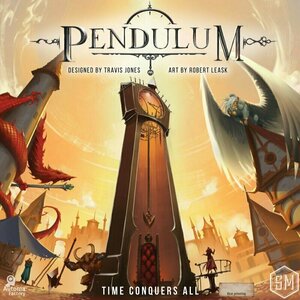
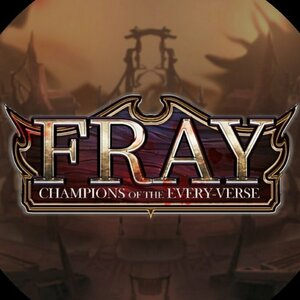


Matthew Krueger (10051 KP) Dec 5, 2020